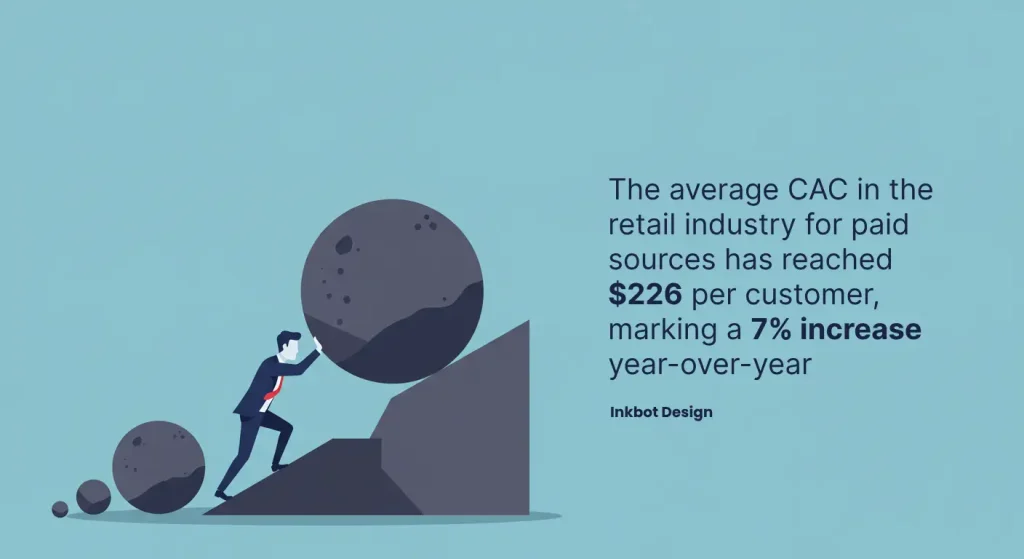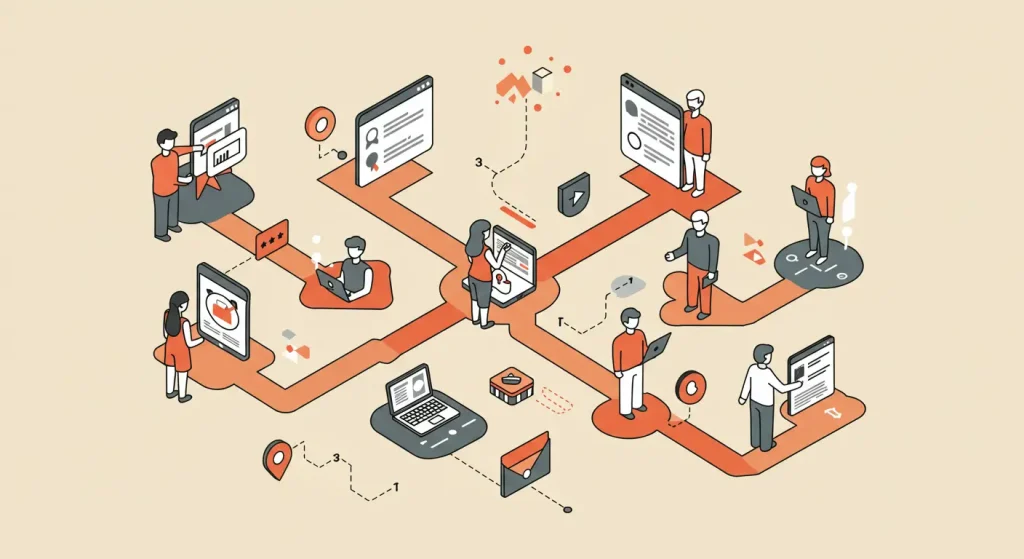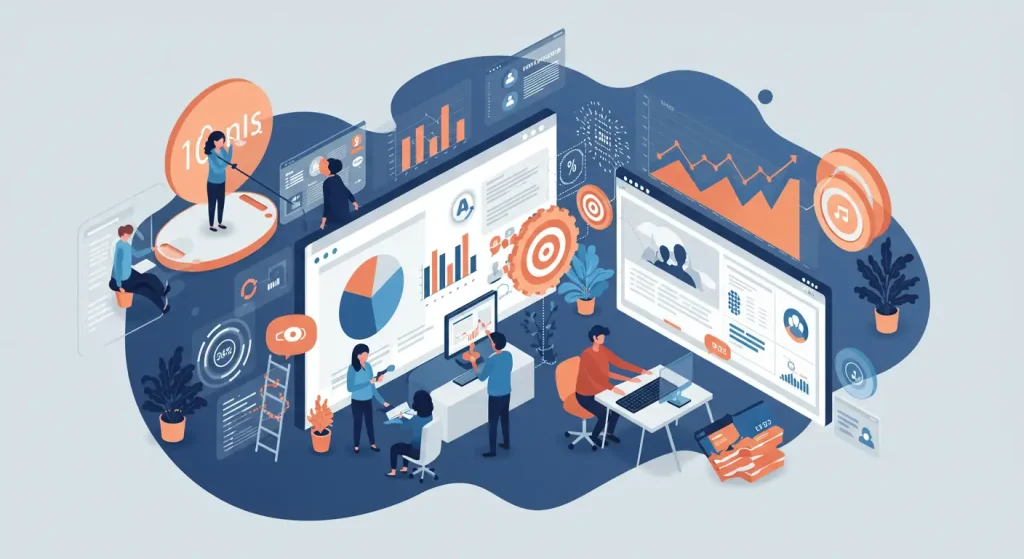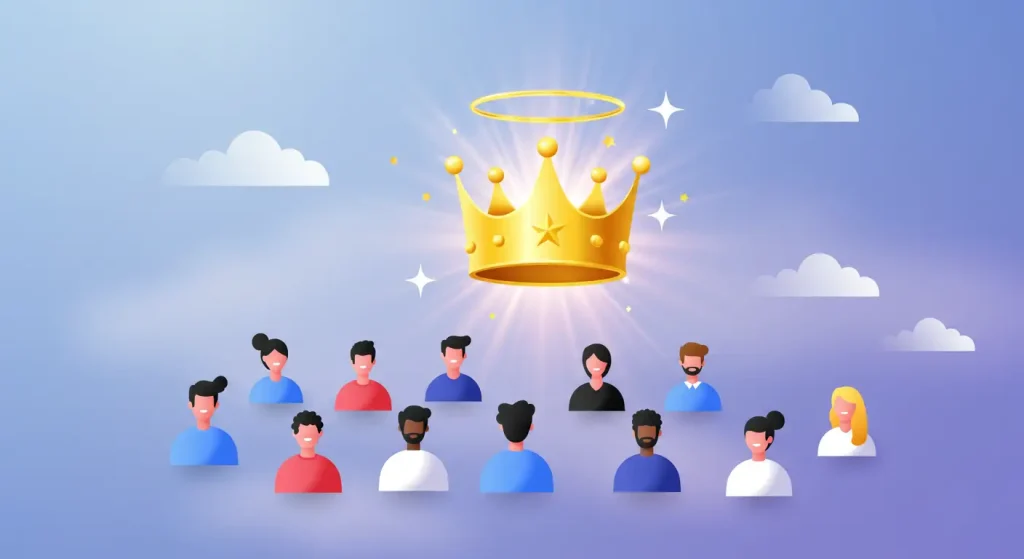Top 10 Marketing Challenges to Overcome
Every day, business owners like you make the same expensive marketing mistakes.
I see it constantly—companies blowing six figures on outdated strategies. Entrepreneurs chase vanity metrics while their competitors quietly steal their customers. Marketing teams run in circles, producing content nobody cares about.
The truth? Most business owners aren't failing because they lack creativity or marketing budgets. They're failing because they don't recognise the real challenges standing in their way.
The old playbook no longer works in a world where the average person sees 4,000-10,000 ads daily. The businesses that win today have figured out how to overcome the critical marketing obstacles that keep most companies in mediocrity.
I've helped businesses scale from six to eight figures by systematically eliminating these exact marketing roadblocks. Today, I'm pulling back the curtain on the top 10 marketing challenges secretly sabotaging your growth—and exactly how to overcome them.
Let's dive in…
- Rising customer acquisition costs necessitate targeted advertising and data-driven strategies to optimise ROI.
- Navigating data privacy regulations is critical for retaining customer trust and ensuring compliance.
- Creating personalised experiences at scale can enhance customer engagement and loyalty.
- Mastering multi-channel marketing simplifies audience reach across various platforms effectively.
- Adapting to AI and automation is essential for maintaining relevance and efficiency in marketing efforts.
- The Marketing Landscape in 2025
- 1. Rising Customer Acquisition Costs
- 2. Navigating Data Privacy Regulations
- 3. Creating Personalised Experiences at Scale
- 4. Managing Multi-Channel Marketing Complexity
- 5. Adapting to AI and Automation
- 6. Competing in an Oversaturated Content Market
- 7. Increasing Customer Retention Rates
- 8. Mastering Social Media Algorithm Changes
- 9. Enhancing Website Performance and SEO
- 10. Building a Sustainable Marketing Strategy
- The Silent Shifts You're Missing
- Predictions That'll Age Poorly (For Everyone Else)
- Black Swans Lurking in the Weeds
- The Bottom Line
The Marketing Landscape in 2025

The marketing landscape is shifting rapidly, and you might get left behind if you're not paying attention. Remember back in the day when a flyer or a newspaper ad was all you needed? Well, those days are long gone.
Today, marketing is about harnessing technology, data, and the human connection to win over customers.
So, what's driving this evolution? Here are some key factors to consider:
- Technological Advances: With new tools and platforms, we have more marketing channels than ever to reach our audience. Think about it: You can interact with potential customers on social media, through emails, or even directly on your website.
- Consumer Behaviour: Customers today want personalised experiences. They expect brands to know them, understand their needs, and reach out to them in ways that feel human. Gone are the days of generic marketing. People want to feel special.
- Data Usage: Data is the new gold mine. With insights from analytics, businesses can craft strategies that resonate with their audience. Knowing where your customers spend their time and what they like allows you to tailor your approach to fit them perfectly.
Here's what's happening in marketing – grounded in data you won't hear from mainstream analysts. Buckle up.
Stats Nobody's Talking About
- 47% of businesses still operate without any digital strategy despite digital ad spending hitting $667bn. This isn't negligence – it's Darwinism in action.
- Marketers now process 230% more data than in 2020, but 56% admit they've no time to analyse it properly. We're drowning in numbers but starving for insights.
- Only 16% of brands leverage zero-party data despite 66% fearing cookie deprecation's impact. Most are clinging to third-party crutches while the floor vanishes beneath them.
What This Means for Your Wallet
- The Strategy Gap is a Goldmine: While rivals fumble in the dark, brands with clear digital frameworks (like Optimizely's KPI-driven approach) are capturing abandoned market share at pennies on the dollar.
- Data Obesity is Crippling Teams: Marketers aren't “data-driven” – they're data-buried. Supermetrics reports that teams waste 37% of workdays reconciling disconnected metrics. Tools that unify reporting will dominate.
- Zero-Party is the New Oil: Brands hoarding preference data via quizzes/polls now achieve 3.2x higher conversion rates. Everyone else? They're bargaining with ad platforms for scraps.
A marketer's ability to adapt and utilise these changes will determine success in an ever-evolving landscape. It's not just about keeping up; it's about getting ahead.
Importance of adapting to emerging challenges in 2025
Transitioning from the constantly evolving marketing landscape brings us to a vital point: the importance of adapting to emerging challenges in 2025. If you think sticking to your old strategies will get you through, think again.
The following factors illustrate why adaptability should be at the forefront of your marketing approach.
- Changing Consumer Behaviours: Today's customers seek connections and aren't just looking for a purchase.
- Data Privacy Regulations: With regulations like GDPR and CCPA shaping how we collect and use data, transparency with customers can't be overlooked.
- The Need for Agility: The pace of technological change means that yesterday's solutions might not solve today's problems. Agile marketing practices allow for quick shifts in response to market demands.
- Oversaturation of Content: With countless brands vying for attention, you must have unique, high-quality content.
Flexibility in your marketing approach isn't just smart; it's crucial. Embrace the challenges of 2025, and you'll find a world of opportunity waiting.
1. Rising Customer Acquisition Costs

As we dive deeper into the marketing challenges of 2025, one significant hurdle we face is the rising customer acquisition costs (CAC). If you think about it, acquiring customers has never been more expensive. But why? Let's explore this phenomenon and what you can do about it.
– Understanding the Cost Increase
First, let's unpack the reasons behind this surge in CAC. Factors include:
- Increased Competition: With more businesses online, the competition for eyeballs has reached a fever pitch. Brands are pouring cash into ads, making it pricier for everyone.
- Demand for Personalisation: Customers expect tailored experiences, which means more resources are spent on data analytics and targeted marketing.
- Ad Costs: Platforms like Google and Facebook regularly update their algorithms and ad pricing, often leading to steeper costs to reach your intended audience.
– Strategies to Improve ROI
Now, how can you counter these rising costs? One approach is improving your return on investment (ROI). Here are a few strategies:
- Targeted Ads: Use data analytics to identify your most profitable target market. This will help you invest strategically rather than broadly.
- A/B Testing: Continuously test your marketing messages and channels to identify what resonates. I saw a massive conversion boost by tweaking ad copy—minor tweaks, big results!
– Leveraging Organic Growth Channels
Finally, don't underestimate the power of organic growth channels. Investing in content marketing and SEO can lead to sustainable growth without the hefty price tag of paid ads. Consider:
- Quality Content Creation: Write blog posts or create videos that genuinely help your audience. Good, informative content drives organic traffic.
- Social Media Engagement: Be active on social media, creating genuine connections with your audience. This can boost brand loyalty without breaking the bank.
As you navigate the rising customer acquisition costs, remember that there are always paths to efficiency and growth.
2. Navigating Data Privacy Regulations
Navigating data privacy regulations is crucial as we continue tackling marketing challenges in 2025. With rising concerns over how data is collected and used, failing to comply can result in hefty fines and lost customer trust.
– Key Regulations Impacting Marketers in 2025
Several major regulations are shaping the landscape today:
- GDPR (General Data Protection Regulation): EU-based, this regulation has made waves worldwide, requiring companies to follow strict guidelines regarding user consent and data protection.
- CCPA (California Consumer Privacy Act): This US regulation allows California residents to control their personal information more effectively, and its influence is spreading.
- ePrivacy Directive: Focusing on the privacy of electronic communications, this directive complements GDPR, particularly regarding online tracking and cookies.
– How to Build Trust Through Transparency
With regulations tightening, building trust through transparency is your best strategy. Here's how to do it:
- Clear Privacy Policies: Update your privacy policy to be jargon-free. Use plain language to explain what data you collect and how it's used.
- User Control: Allow customers to opt in and opt out easily. Giving them control builds confidence in your brand.
– Adopting Privacy-Centric Marketing Strategies
Finally, adopting privacy-centric strategies can position you as a business leader in trust. Consider:
- Data Minimisation: Collect only essential data for your marketing efforts. Less data means fewer risks.
- Emphasise Consent: Make the consent process a part of your customer interactions rather than an afterthought. “We'd love to send you customised offers!” can work wonders.
Navigating data privacy regulations may seem daunting, but it's an opportunity for brands to stand out by prioritising trust and transparency.
3. Creating Personalised Experiences at Scale

As we explore effective marketing strategies for 2025, one major trend stands out: the need to create personalised experiences at scale.
Gone are the days of one-size-fits-all marketing. Nowadays, customers want tailored interactions that make them feel understood.
– Balancing Automation with Human Touch
The key to successful personalisation is finding the right balance between automation and the human touch. Automation can streamline your processes, but too much can make your communications feel robotic. Here are a few tips:
- Predictive Analytics: Use algorithms to predict customer behaviour based on historical data. This speeds up the personalisation process while still feeling tailored.
- Human Checkpoints: Incorporate checkpoints where humans can review and modify automated messages. A personalised note can go a long way!
– Tools and Platforms for Personalisation
Several practical tools and platforms can help you create these personalised experiences:
- CRM Software (e.g., HubSpot, Salesforce): Manage customer relationships while tracking preferences and past interactions.
- Email Marketing Tools (e.g., Mailchimp, ActiveCampaign): Automate but personalise emails based on segments and user engagement.
- Personalisation Engines (e.g., Dynamic Yield, Optimizely): This tech helps deliver content dynamically based on user behaviour.
– Examples of Effective Personalised Campaigns
Let's take a look at some brands that have nailed personalisation:
- Netflix: Their recommendation engine suggests shows based on viewing history. It keeps users engaged and coming back for more.
- Amazon: They send tailored emails with product suggestions based on previous purchases. This drives sales and improves customer loyalty.
By focusing on creating personalised experiences, you'll be able to connect with your audience on a deeper level while scaling your efforts.
4. Managing Multi-Channel Marketing Complexity
As we forge into 2025, managing multi-channel marketing complexity becomes increasingly essential. Brands must create a seamless presence with consumers across various platforms, from social media to email. But how do you tackle this multifaceted challenge?
– Identifying the Right Channels for Your Audience
First off, you need to know where your audience hangs out. Choosing the proper channels can make or break your marketing success. Consider these steps:
- Audience Research: Utilise surveys or analytics to understand where your customers spend their time.
- Test & Measure: Start small on different platforms and gauge engagement. Platforms like TikTok might work wonders for younger audiences, while LinkedIn can be gold for B2B connections.
– Creating Consistent Messaging Across Platforms
Once you've identified your channels, consistency in messaging is key. Here's how to achieve this:
- Brand Guidelines: Develop clear guidelines for your brand's tone, style, and visuals. This acts as a roadmap to ensure your messaging stays uniform across platforms.
- Tailored Content: While consistency is crucial, don't forget to tailor your content for each platform. An X post may be snappy, while a Facebook post can be more detailed.
– Tools to Streamline Multi-Channel Campaigns
Finally, don't shy away from using tools to organise your marketing campaigns effectively. Consider:
- Marketing Automation Software (e.g., HubSpot, Buffer): These tools help you schedule and manage posts across channels, saving time and reducing errors.
- Analytics Tools (like Google Analytics or Sprout Social): Monitor performance across channels to make data-driven decisions and optimise your campaigns.
Navigating multi-channel marketing doesn't have to be overwhelming. With the proper focus and tools, you can create a cohesive and compelling brand presence that resonates with your audience across platforms.
5. Adapting to AI and Automation

Continuing our journey through the evolving marketing landscape of 2025, a significant focus lies on adapting to AI and automation. This technology is not just a trend; it's transforming how we connect with our customers.
– Key AI Trends in Marketing for 2025
AI is reshaping marketing in several substantial ways. Here are a few key trends to keep on your radar:
- Hyper-Personalisation: AI allows brands to deliver highly tailored content based on individual user behaviours and preferences. Think of Netflix's recommendations for your entire marketing strategy!
- Predictive Analytics: This trend leverages data to forecast customer behaviour, making your campaigns smarter and more targeted.
- Chatbots and Virtual Assistants: These AI tools are becoming commonplace in customer service, providing instant responses and freeing human resources for more complex queries.
– How to Integrate AI Without Losing Brand Voice
One concern many marketers have is maintaining their brand voice while using AI. Here are some tips:
- Set Clear Guidelines: Establish guidelines that define your brand voice and style. This ensures that AI tools align with your messaging.
- Human Oversight: Always have a human check AI-generated content before it goes live. A simple review can keep your brand voice authentic and engaging.
– Top AI Tools to Enhance Campaign Efficiency
To harness the power of AI, several tools can help streamline your campaigns:
- Content Creation Tools (e.g., Copy.ai, Grammarly): These can aid in crafting catchy marketing copy while maintaining your unique tone.
- Analytics Platforms (e.g., HubSpot, Google Analytics): AI-enhanced analytics tools can provide deeper insights into customer behaviours and campaign performance.
As we embrace AI and automation in 2025, remember that the focus should always remain on the customer. Use technology to enhance connection, not replace it, and watch your marketing soar to new heights!
6. Competing in an Oversaturated Content Market
As we delve deeper into marketing strategies for 2025, one significant hurdle to overcome is the oversaturation of content in various niches. Every day, audiences are bombarded with information, making grabbing their attention more challenging.
– Identifying Unique Value Propositions
The first step in standing out is identifying your unique value proposition (UVP). This is what sets you apart from the crowd. To find your UVP, consider:
- Customer Pain Points: Understand what your customers struggle with that others aren't addressing. My blog section about digital marketing success began gaining traction when I focused on the specific pain points of small businesses rather than general advice.
- Your Expertise: Leverage your personal or brand strengths. Make that a core content strategy if you're a whiz at infographics.
– Leveraging Niche Content Strategies
Another practical approach is to niche down your content strategy. Rather than appealing to everyone, focus on specific segments. Here's how:
- Targeted Content Creation: Create content that speaks directly to niche communities. For instance, if you're in fitness, consider creating material specifically for postpartum mothers rather than for all fitness enthusiasts.
- Engagement with Communities: Get involved in niche forums or online groups. Building relationships with like-minded individuals can be a treasure trove of ideas for tailored content.
– Creating Content That Stands Out
Finally, when crafting your content, focus on making it remarkably engaging. Here's how to do it:
- Innovative Formats: Experiment with formats such as video explainers, interactive infographics, or podcasts. These can help your content resonate better with audiences.
- Storytelling: Engage your audience with authentic stories. People connect with narratives, so share your experiences or customer success stories to draw in your readers.
Finding your niche and presenting unique and engaging material will capture attention and foster lasting connections in a world overflowing with content.
7. Increasing Customer Retention Rates

As we pivot from content creation strategies to focus on increasing customer retention rates in 2025, it's essential to understand that keeping a customer is often more rewarding than acquiring a new one. By prioritising retention, businesses can increase their profits and foster loyal relationships.
– Understanding the Value of Retention in 2025
Customer retention is more critical than ever. Here's why:
- Cost-Effectiveness: It's widely acknowledged that acquiring a new customer can cost five times more than retaining an existing one. Focusing on retention can significantly affect your bottom line.
- Repeat Business: Loyal customers are likely to spend more and refer others. I remember offering exclusive promotions to regular customers; my sales increased modestly, but referrals skyrocketed!
– Loyalty Programs and Reward Strategies
Implementing effective loyalty programs can dramatically enhance customer retention. Consider these strategies:
- Tiered Rewards: Create levels in your loyalty program to encourage continual engagement. This motivates customers to climb tiers for better rewards, leading to increased spending.
- Exclusive Offers: Give loyal customers special discounts or early access to new products. Personalisation is critical; make sure these offers align with their preferences.
– Improving Customer Support and Engagement
Finally, exceptional customer support plays a pivotal role in retention. Here's how to improve it:
- Accessible Support Channels: Offer multiple support channels like live chat, phone, and email. Customers appreciate quick responses. In my experience, switching to live chat improved my response times, leading to higher customer satisfaction.
- Feedback Loops: Regularly solicit feedback and act on it. Customers want to know that their opinions matter. Implementing suggestions can make them feel valued and strengthen their connection to your brand.
In 2025, focusing on customer retention is more than just a strategy; it's about building lasting relationships. By understanding the value of retention, creating enticing loyalty programs, and enhancing customer support, you'll foster loyalty that drives success.
8. Mastering Social Media Algorithm Changes
As we transition into social media marketing in 2025, mastering algorithm changes becomes crucial. Social media platforms continually evolve to enhance the user experience, and your strategy must adapt accordingly.
– Key Algorithm Trends to Watch in 2025
Understanding the key trends in social media algorithms is the first step:
- Increased Emphasis on Authenticity: Platforms like Instagram and Facebook prioritise genuine engagements over mere likes. Content should resonate authentically with audiences.
- Video Content Dominance: Short-form videos are becoming essential for engagement. TikTok, Reels on Instagram, and YouTube Shorts are where attention is concentrated, and they often thrive on algorithms.
- Niche Communities: Social media favours smaller, engaged groups rather than broad audiences. This change encourages content targeting specific interests to drive more profound conversations.
– Strategies to Improve Organic Reach
To combat the complexities of algorithm changes, here are effective strategies for improving organic reach:
- Engagement-Driven Content: Focus on creating content that encourages conversations. Ask questions or prompt discussions to increase interactions.
- Consistency is Key: Regular posting boosts visibility. Develop a content calendar to maintain a steady flow of posts and avoid long gaps.
– Balancing Paid vs. Organic Strategies
Finally, you must develop a balance between paid and organic strategies to maximise your reach:
- Invest in Ads Wisely: Use targeted ads to complement organic efforts. Leverage social media's targeting capabilities to reach your ideal customer. This approach can enhance your organic strategy by reinforcing your message.
- Dive into Analytics: Regularly check analytics to understand what works. Knowing which posts perform best helps refine both your paid and organic strategies.
By mastering social media algorithms in 2025, you can enhance your online presence and engagement.
9. Enhancing Website Performance and SEO

As we shift our focus to enhancing website performance and search engine optimisation (SEO) in 2025, it's clear that the stakes are high. A well-optimised website can make all the difference in visibility and user experience. So, let's explore the key elements contributing to effective SEO and performance!
– Google's 2025 SEO Trends and Best Practices
Understanding Google's evolving algorithm is crucial for SEO success. Here are some trends to watch for in 2025:
- E-E-A-T (Experience, Expertise, Authoritativeness, Trustworthiness): Google heavily emphasises content quality. Ensure your content comes from credible sources and demonstrates authority in your niche.
- User Intent: Focus on satisfying user intent. Create content that directly answers questions your audience is asking—this is vital for ranking well.
- Mobile-First Indexing: With mobile usage dominating, Google prioritises mobile versions of websites for indexing. Responsive design isn't just a suggestion; it's a requirement!
– Speed Optimisation and Core Web Vitals
Website speed is more critical than ever. Here's how to optimise it and improve your Core Web Vitals:
- Minimise Load Times: Compress images, use caching, and minimise unnecessary code. A faster loading site leads to a better user experience and lower bounce rates.
- Monitor Core Web Vitals: Regularly check your site's performance, focusing on metrics like Largest Contentful Paint (LCP), First Input Delay (FID), and Cumulative Layout Shift (CLS). Prioritising these will enhance user engagement.
– Content Clustering and Keyword Strategy
Finally, let's talk about how effective keyword strategy and content clustering can skyrocket your SEO:
- Content Clustering: Group related pieces of content around central themes or topics. This improves site structure and helps search engines index your content effectively.
- Strategic Keyword Use: Perform in-depth keyword research to find long-tail keywords that align with user search intent. Naturally, integrate these into your content for optimal positioning.
Enhancing your website performance and SEO in 2025 will establish a strong online presence that attracts traffic and retains visitors.
10. Building a Sustainable Marketing Strategy
As we wrap up our exploration of vital marketing strategies for 2025, it's crucial to focus on building a sustainable marketing strategy. It's not enough to chase quick wins; you need a plan that ensures long-term success. So, let's break down how to create a resilient marketing approach!
– Balancing Short-Term Wins with Long-Term Growth
It's essential to balance immediate results and future growth to foster sustainability. Here's how:
- Quick Campaigns: Execute short-term campaigns that can generate instant recognition or revenue. For instance, flash sales or limited-time offers can stimulate immediate interest in your product.
- Long-Term Vision: Focus on building your brand's identity and customer loyalty. I've seen firsthand how nurturing customer relationships leads to repeat business over time, even after a sale.
Finding harmony between these two aspects creates a robust marketing ecosystem.
– Investing in Evergreen Content
Evergreen content is the backbone of a sustainable strategy. This type of content remains relevant and valuable over time. Here's why you should invest:
- Longevity: Articles that tackle timeless topics, such as “How to Choose the Right Shoes for Running,” can continually attract traffic over months or even years.
- Authority Building: Consistent delivery of high-quality, evergreen content establishes your brand as an authority in its niche. I once wrote a how-to guide that still drives traffic 3 years later!
– Tracking KPIs for Continuous Improvement
Finally, don't forget to monitor your success! Tracking Key Performance Indicators (KPIs) is essential for refining your marketing efforts:
- Defining KPIs: Identify which metrics matter most to your goals, such as conversion rates, customer acquisition costs, or content engagement.
- Regular Assessment: Conduct monthly or quarterly reviews. By analysing KPI performance, you can pinpoint areas for improvement and pivot your strategies effectively.
In 2025, building a sustainable marketing strategy is about preparation and adaptation. Balancing short-term wins with long-term objectives, investing in evergreen content, and tracking your KPIs will position your brand for ongoing success.
The Silent Shifts You're Missing
- AI isn't Coming – It's Already Hiring: 67% of SMBs now use AI for SEO/content, creating a quality chasm between algorithmic content farms and human-crafted narratives.
- Mobile Ads are Eating Desktop: 83% of social ad spend shifts to mobile by 2030. Brands still optimising for desktops are pouring champagne into sippy cups.
- Niche Communities > Mass Audiences: Amsive notes that 62% of Gen Z now discover brands in Discord/WhatsApp groups – not Instagram or TikTok. The “broadcast” era is dead.
Predictions That'll Age Poorly (For Everyone Else)
- By 2027, 90% of content will be AI-generated, forcing Google to penalise “bot-speak” – human writers charge 5x premiums.
- By 2028, first-party data will become currency – brands without it will pay 300% more for customer acquisition via walled gardens (Meta/Google).
- By 2030: Mobile video ads hit $9.12 per 1,000 impressions as attention spans crater below goldfish levels (currently 8.25 seconds).
Black Swans Lurking in the Weeds
- AI Disclosure Laws: If regulators force “created by AI” labels (as proposed in the EU), organic reach for synthetic content plummets 40% overnight.
- Attention Crash: When the average user's screen time peaks at 7hrs 22mins (per GWI), platform algorithms will prioritise 3-second micro-content – nuking traditional storytelling.
- Cookiepocalypse 2.0: If Apple/Google blocks all cross-site tracking by 2026 (not just cookies), brands relying on third-party data face 65% higher CAC overnight.
The Bottom Line
The battlefields shifted. Winners will:
- Treat zero-party data like oxygen masks – collect it or suffocate.
- Replace “content calendars” with algorithmic war rooms optimising in real-time.
- Ditch mass audience plays for hyper-niche communities (think Reddit micro-forums, not LinkedIn).
Losers? They'll keep debating “SEO vs. social” while AI eats both.
